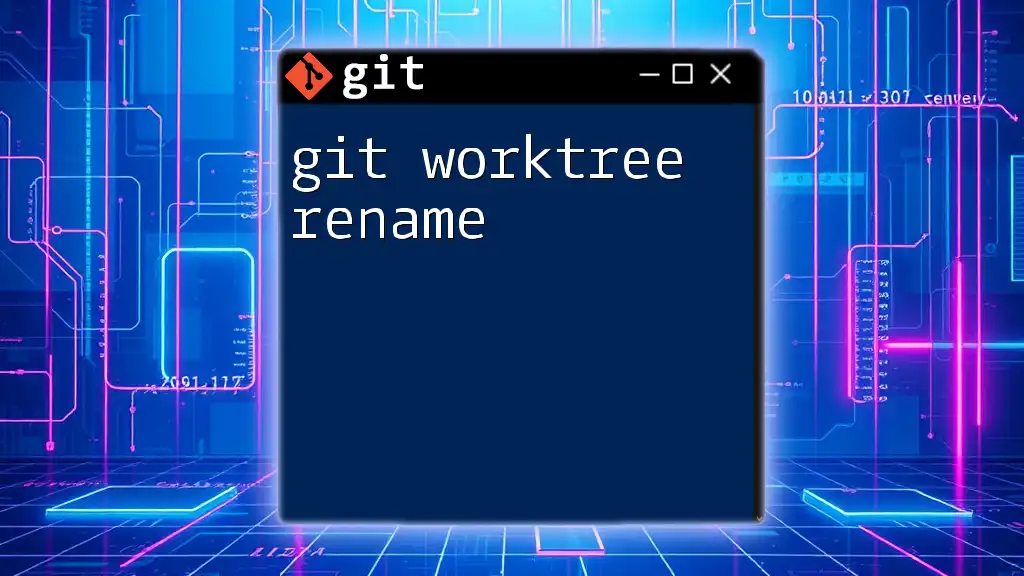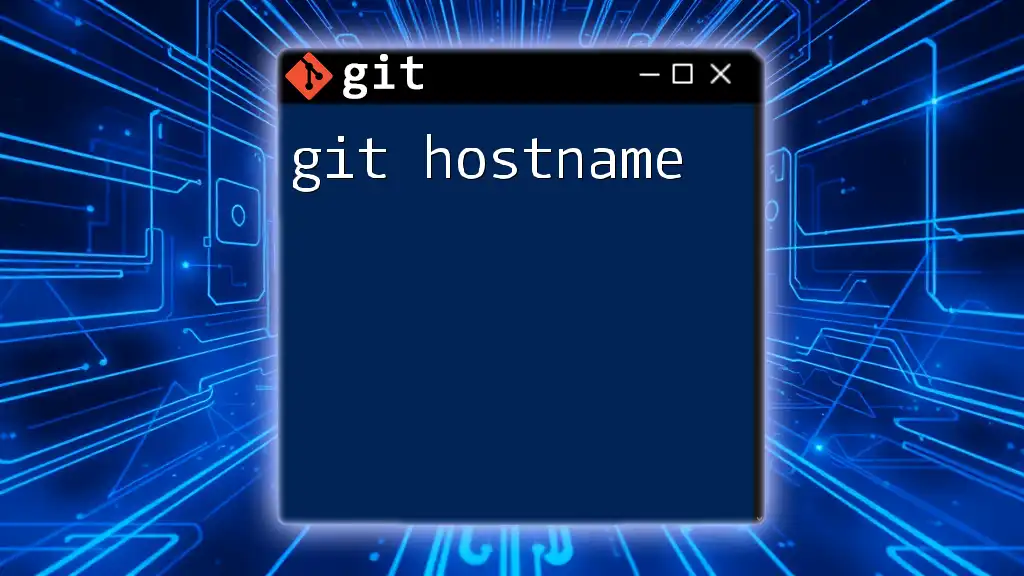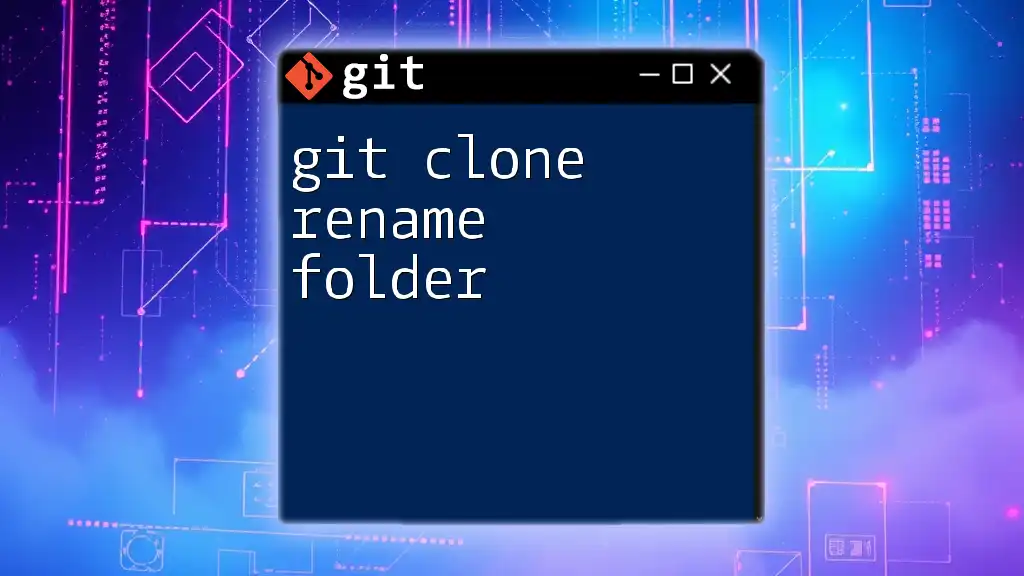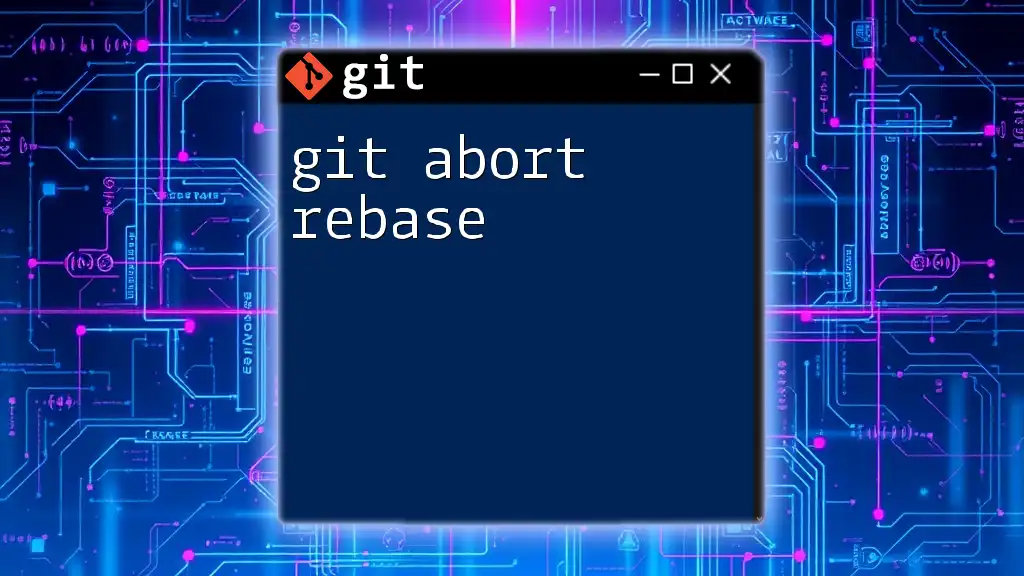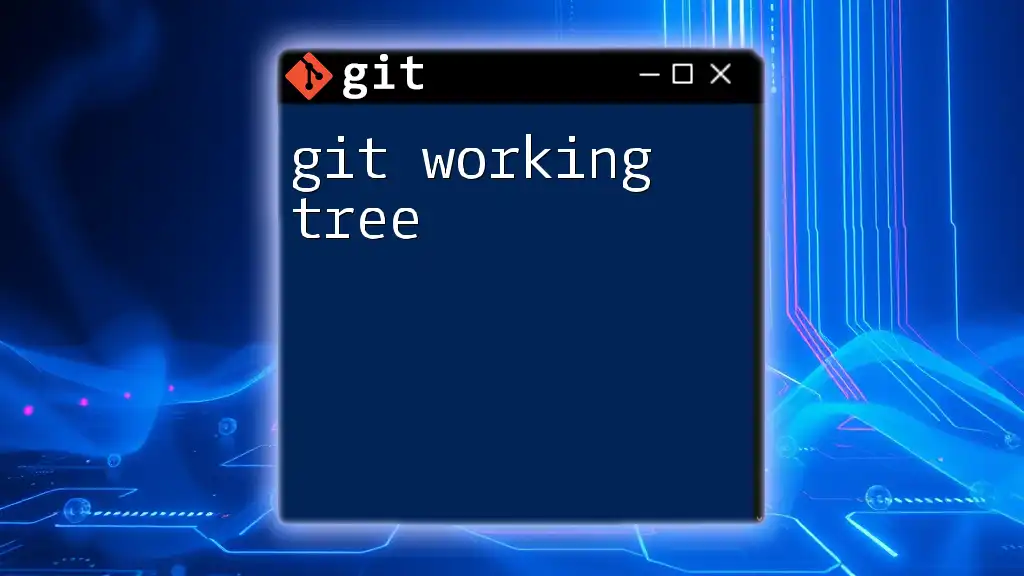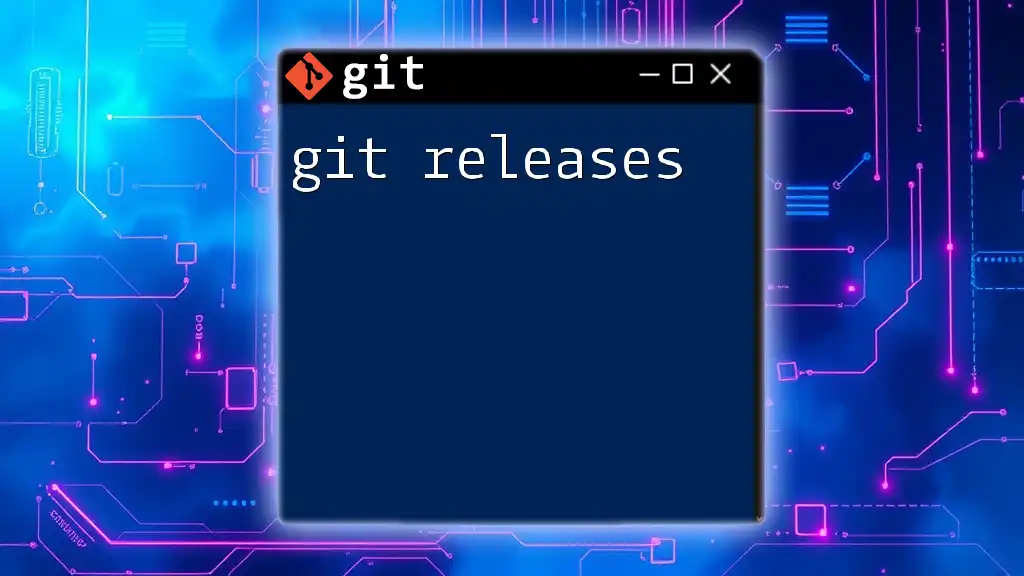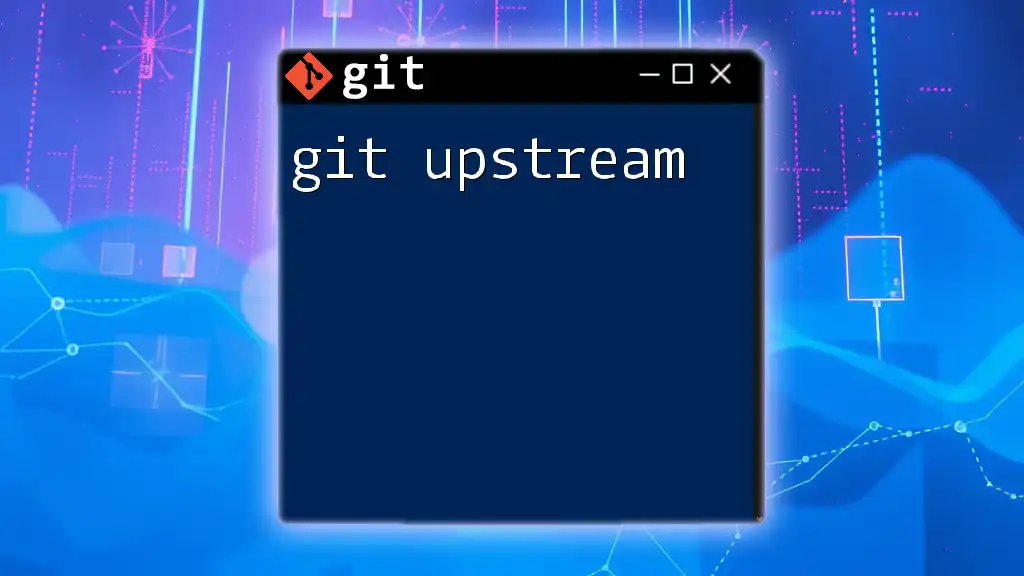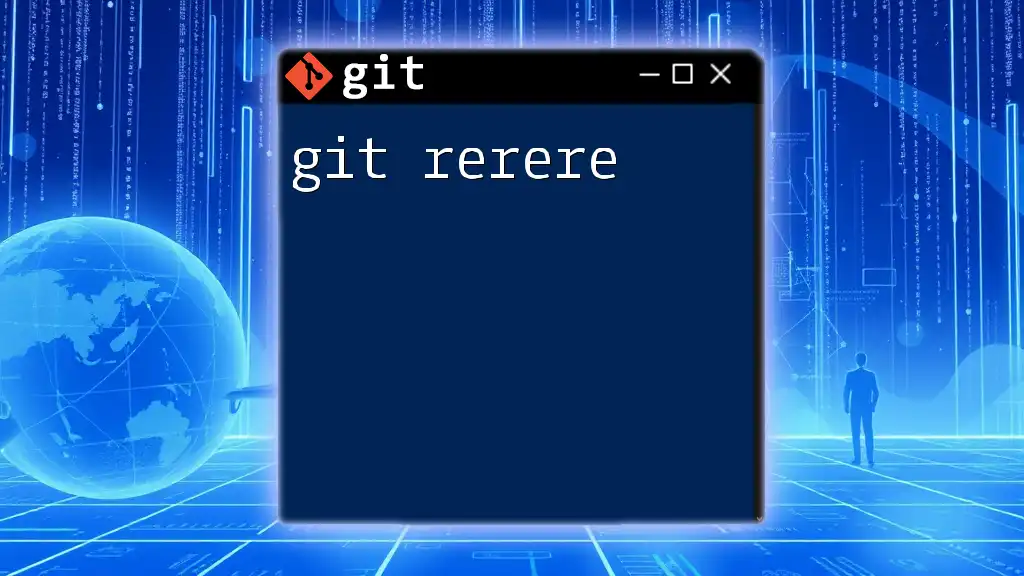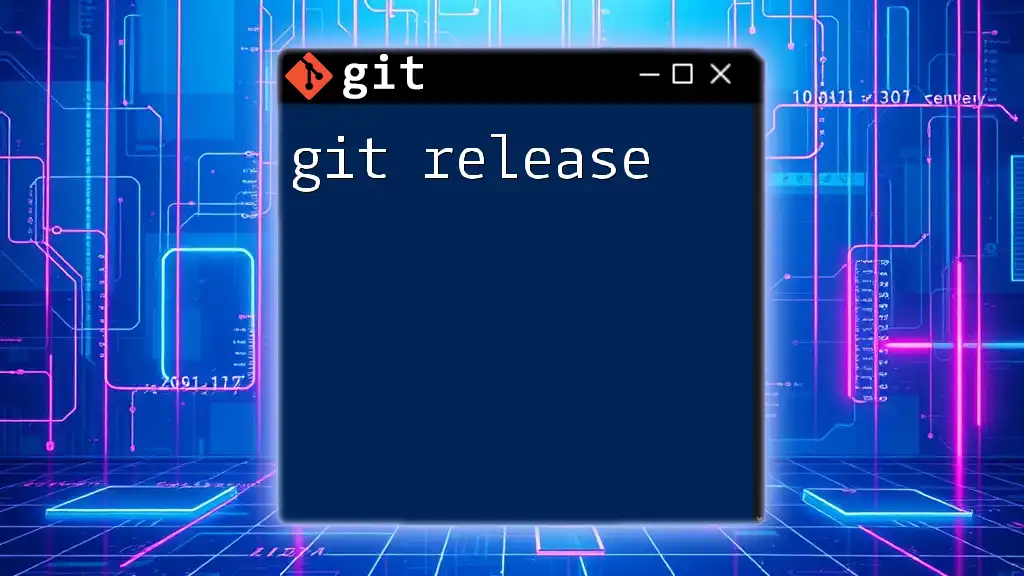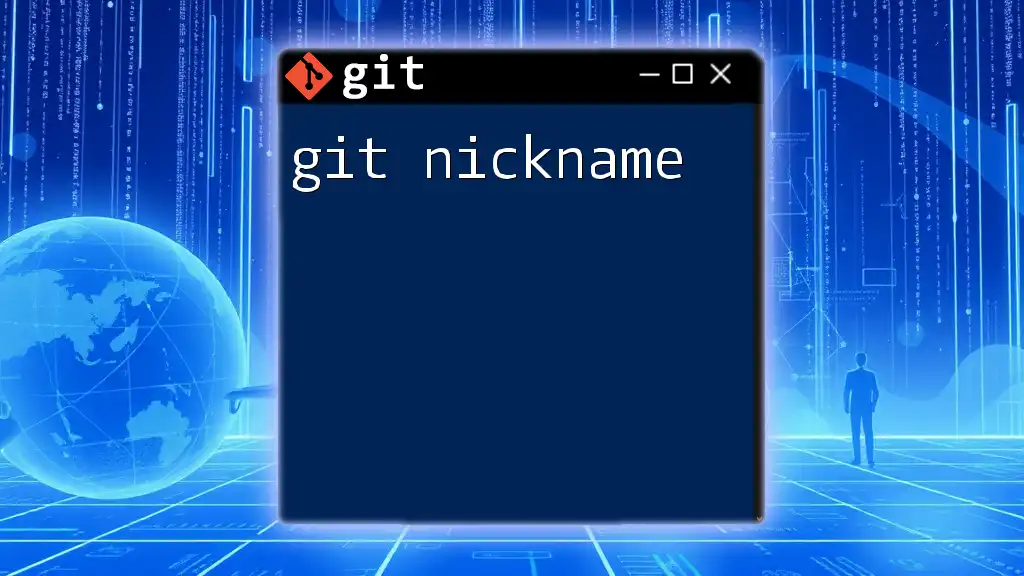The `git worktree rename` command allows you to rename an existing worktree, which is a separate working directory linked to a specific branch in your Git repository.
git worktree rename <old-name> <new-name>
Understanding Git Worktrees
What is a Git Worktree?
A Git worktree is essentially a separate working directory that allows you to check out multiple branches simultaneously. This feature is particularly valuable when you are working on new features or fixes in parallel without resetting the state of your main repository. By using worktrees, you can simplify your workflow, avoid complex branching strategies, and streamline your development process.
Why Rename a Worktree?
Renaming a worktree can serve multiple purposes. It can help maintain clarity when you are collaborating on projects with multiple branches or when you want to reflect changes in scope. Updating worktree names to more accurately describe their purpose can enhance the organization of your project. For example, you may want to rename a worktree from `feature-x` to `feature-x-refactor` to indicate a shift in focus.
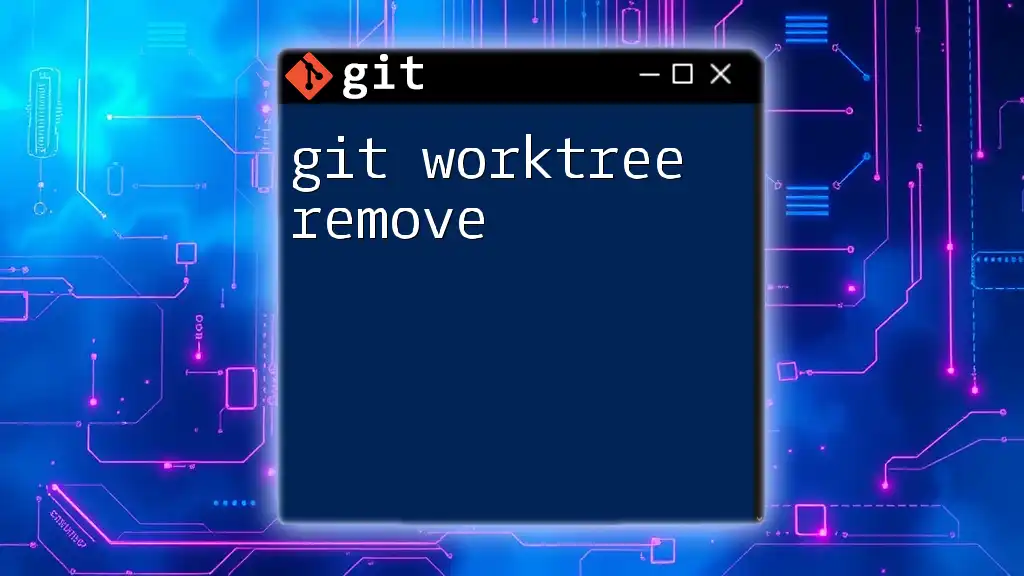
Prerequisites
Basic Git Knowledge
Before diving into the renaming process, you should be familiar with basic Git commands, such as cloning repositories, creating branches, and checking out branches. Understanding how Git structures its workflow is key to effectively using worktrees.
Installing Git
If you haven't installed Git yet, you can do so by following these quick instructions:
- Windows: Download the installer from the [official Git website](https://git-scm.com/download/win) and follow the prompts.
- macOS: Use Homebrew with the command:
brew install git - Linux: You can typically install it using your package manager, for example:
sudo apt-get install git
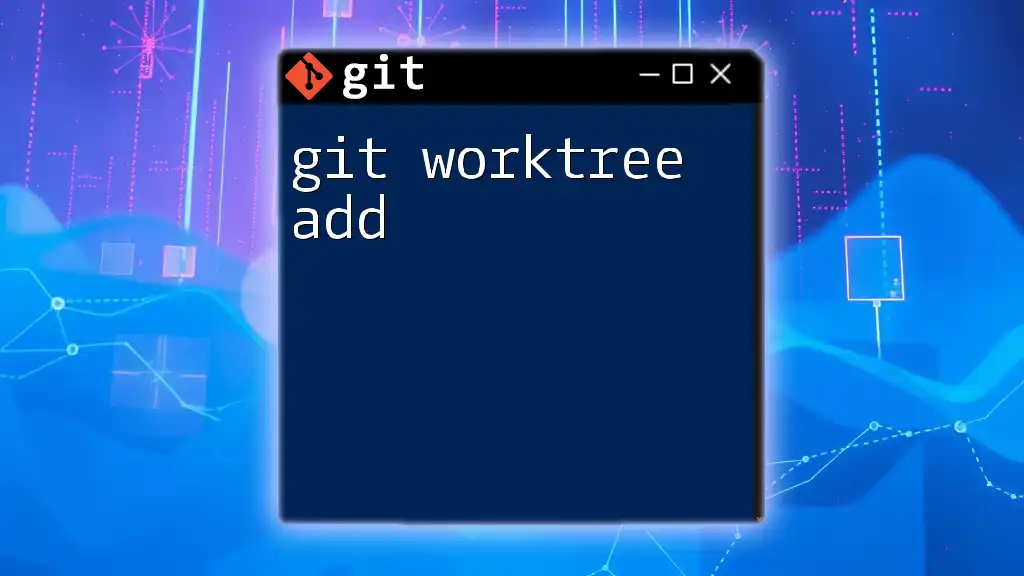
Renaming a Git Worktree
Using the `git worktree rename` Command
The `git worktree rename` command is straightforward but powerful. The basic syntax is as follows:
git worktree rename <old-name> <new-name>
- `<old-name>` is the current name of the worktree.
- `<new-name>` is the desired new name for your worktree.
Step-by-Step Guide to Renaming
Step 1: Locate Your Worktree
Before renaming, you need to know the names of your current worktrees. Use the command below to list all the worktrees associated with your Git repository:
git worktree list
This command will display a list of worktrees along with their respective paths, helping you identify the one you wish to rename.
Step 2: Use the Rename Command
Once you identify the worktree you want to rename, execute the command with the desired new name. For example:
git worktree rename my-feature-branch my-new-feature-branch
This renames the worktree `my-feature-branch` to `my-new-feature-branch`. The renaming process is straightforward and updates references in your Git configuration.
Considerations When Renaming
Impact on Active Branches
It's crucial to remember that renaming should be done while ensuring any active branches are in a committed state. If there are uncommitted changes, consider staging or stashing them first to avoid any potential conflicts.
Potential Errors
When you attempt to rename a worktree that is currently in use, you may encounter error messages. For example, if you try to rename a worktree linked with a checked-out branch, Git will prompt you with an error. Always double-check before renaming, using the list command to confirm.
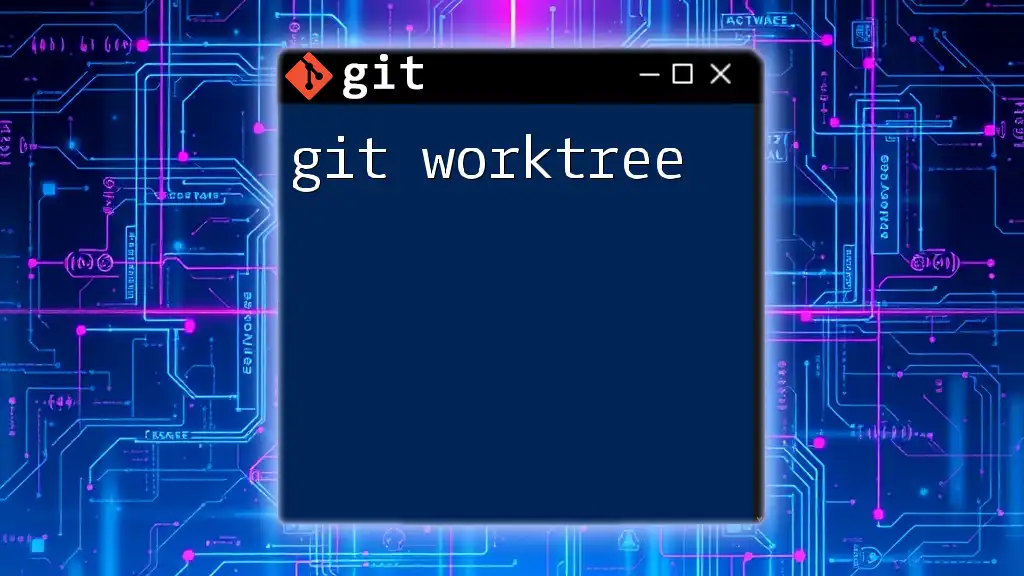
Practical Examples
Real-World Use Cases
One common use case for renaming a worktree is when working on collaborative projects. For instance, you might begin with a generic name like `feature-branch`, but as the feature matures, you can rename it to something more descriptive, such as `feature-branch-v2`, facilitating better collaboration among team members.
Another scenario may involve personal projects, where you’ve redesigned the scope or objectives. Changing a worktree's name from `prototype` to `final-product` can signal a significant transformation in the project's phase.
Renaming Worktrees under Different Conditions
Be attentive to the state of your worktrees when renaming. For instance, if you attempt to rename a worktree while there are unstaged changes, Git will allow the operation, but you may confuse your work directory. Similarly, renaming a worktree linked to a detached HEAD state could create misunderstandings about which branch you’re working on. Always ensure clarity in your work process.
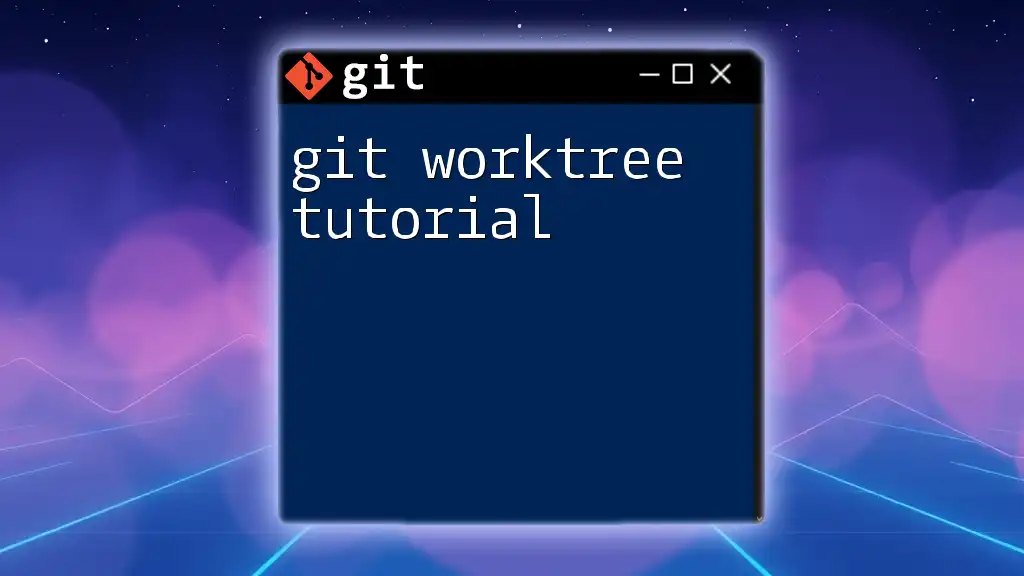
After the Renaming: What to Do Next
Verifying the Changes
After renaming your worktree, it's prudent to verify the change. Just run:
git worktree list
This command will reflect your updated names, ensuring that your worktree is correctly identified in its new format.
Best Practices
To maintain clarity and organization when using worktrees, be mindful of naming conventions. Here are some tips:
- Use descriptive names that indicate the purpose or status of the worktree.
- Avoid using spaces or special characters that may cause confusion in your terminal.
- Regularly update worktree names to reflect changes, especially in collaborative environments.

Conclusion
Renaming worktrees in Git enhances clarity and helps keep projects organized. Whether you're working solo or as part of a team, understanding the `git worktree rename` command is essential for effective project management. Encouraging your team members to also adopt clear naming conventions can further improve the overall workflow.
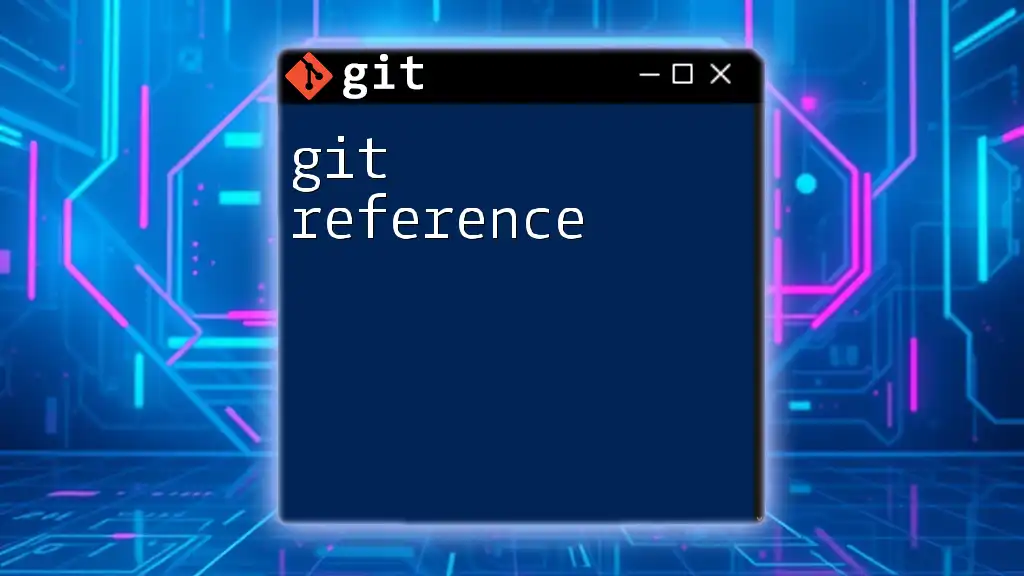
Additional Resources
For more advanced Git topics and to deepen your understanding, consider exploring the [official Git documentation](https://git-scm.com/doc). Additionally, stay tuned for articles on best practices, workflows, and tips from our company as you navigate through the world of Git commands.

FAQs
Common Questions About Renaming Worktrees
What happens if I rename a worktree that's currently in use?
If you rename a worktree while it's checked out and in use, you may encounter errors. Always ensure that all changes are committed before proceeding with a rename.
Can I rename a worktree to a name that already exists?
No, Git will not allow you to rename a worktree to a name that is already in use within the same repository. Choose unique names to avoid conflicts.
How does renaming affect my local branches?
Renaming a worktree does not change your local branches or their state. It simply updates the directory name for easier identification.

